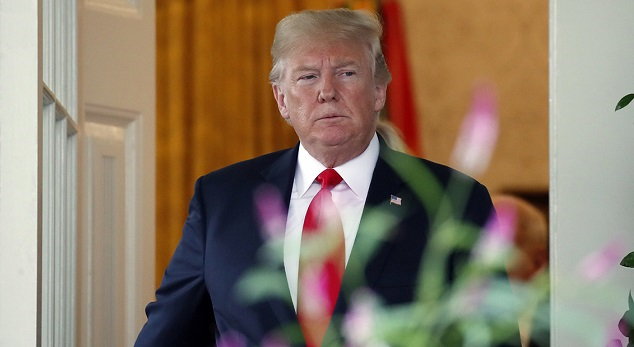One of the world’s largest cities, México City is home to an estimated 20 million inhabitants. This massive metropolis began as the Aztec capital of Tenochtitlan around 1325.
Hernan Cortes, the Spanish conqueror, destroyed it in 1521. A new city was established on its ruins, and it became the seat of government for the Vice-royalty of New Spain and, eventually, the Republic of Mexico.
What You Want to Know?
Top 10 Places to Visit in Mexico City
At Mexico City, you may find out more about the Aztecs and the Europeans who conquered them.
The Aztecs were one of the world’s great early civilizations. Among the more recent structures, you may still find many that feature colonial architecture.
Visitors can also view murals by Diego Rivera, one of the world’s best muralists, while in the city. Some of Mexico City’s most popular sights are as follows:
Read Also:
- Top 10 Places to Visit in Turkey
- Top 10 Places to Visit in Copenhagen
- Top 10 Places to Visit in United States
1. Basilica de Guadalupe
The Lady Mary appeared to a poor peasant in 1531, requesting that he inform the bishop that a temple should be erected there in her honour. This event led to the construction of the Basilica de Guadalupe. The bishop didn’t believe the man had seen the Virgin so he demanded evidence.
He complied with her request and hid a bouquet of roses under his cloak, but as he unzipped it, the image of the Virgin Mary inside the flowers tumbled out.
In the years between 1974 and 1976, the “New” Basilica of Guadalupe was constructed according to plans drawn up by Pedro Ramirez Vasquez (he also drew up plans for the National Museum of Anthropology).
The huge plaza in front of the basilica can accommodate 50,000 people, and it does so every year on December 12 for the feast day of the Lady of Guadalupe.
2. Chapultepec Castle
On top of “grasshopper hill,” or Chapultepec Hill, sits the majestic Chapultepec Castle. The Aztecs held this location in the highest regard, and in the nineteenth century, Emperor Maximilian I and Empress Carlota made their house here.
A fresco at the castle’s gate pays tribute to the six young military cadets who gave their lives defending the castle in 1847 during the Mexican-American War. The Museo Nacional de Historia is now located in the castle.
3. Museo Frida Kahlo
Although though she was married to another well-known Mexican artist, Diego Rivera, Frida Kahlo was a major figure in the Mexican art world in her own right. The Casa Azul (Blue House), where she spent her whole life, was the location of both her birth and her death.
Rivera opened a museum in her home in 1968. The museum showcases their works alongside those of other folk artists, as well as pre-Spanish relics and personal items. Coyacan’s most popular museum and one of Mexico City’s most popular tourist destinations.
4. Palacio de Bellas Artes
Luxurious and white, the Palacio de Bellas Artes (Palace of Fine Arts) serves as Mexico City’s and the country’s cultural epicentre. The outside features neo-classical and art nouveau elements, while the inside is decorated in the art deco style.
The structure was constructed on the site of a former convent and the first National Theatre of Mexico. Murals by renowned Mexican artists like Siquieros and Diego Rivera are its claim to fame. It’s also a theatre where you can catch shows by companies like the Ballet Folklorico de Mexico.
5. Palacio Nacional
The presidential offices of Mexico are located in Palacio Nacional. According to popular belief, the president is not the first person to hold this position. The palace was constructed in large part from materials originally used to construct a palace for the Aztec emperor Montezuma II. One entire side of the Plaza de la Constitucion is taken up by the palace.
A bell from the War for Mexican Independence can be found in the palace, and it is rung every year on September 15 to celebrate the victory.
Diego Rivera painted murals illustrating Mexican history from the pre-Columbian era until the Mexican Revolution, which can be found inside the palace’s elaborate rooms. Free English-speaking tours are available.
6. Xochimilco
Before the Spanish conquest, the suburb of Xochimilco in Mexico City was located on the banks of Lake Xochimilco. The ancient canals that circled the lake and linked the surrounding settlements are now its most recognisable feature.
Tourists can take rides in trajineras, Mexico’s answer to the gondola, around the canal system’s 110 miles. Most of Xochimilco is protected as a wildlife sanctuary. The historic architecture of Xochimilco makes it a pleasant spot to stroll.
7. Templo Mayor
The Aztec city of Tenochtitlan was home to the Templo Mayor. Over the years, the temple expanded to the point that it was the hub of religious activity. This was the site of human sacrifices to the war and rain gods.
Eventually, in 1521, Spanish conquistadors razed it and built the Cathedral roughly on top of its ruins. The temple, a massive stone pyramid, was thought to be lost forever until its discovery in 1978. Many other temples were uncovered during the excavation and are now visible to visitors as they stroll through the site.
8. Catedral Metropolitana
Catedral Metropolitana, often known as the Metropolitan Cathedral, is the largest and oldest cathedral in the New World, and it is just breathtaking to behold. The cathedral, built in the 16th century, is a spectacular sight when illuminated at night on Plaza Zocalo.
Before the cathedral was built here, a church was constructed using stones from the Aztecs’ Templo Mayor. The cathedral, a synthesis of many architectural eras, houses a superb art collection, much of it colonial in origin.
9. Museo Nacional de Antropologia
At the Museum de Antropologia, you may learn about the diverse cultures that have called Mexico home since long before the Spanish conquest in the 16th century. The museum itself has a more modern look, but the objects it displays date back hundreds of years or more.
The Aztec Calendar Stone is the most well-known item, however it was never used as a calendar. It does, however, feature 20 day signs and the names of the four sun eras that came before the present fifth sun.
Read Also:
- Top 10 Places to Visit in Brazil
- Top 10 Places to Visit in Norway
- Top 10 Places to Visit in Singapore
10. Zocalo
The Zócalo (also known as Plaza de la Constitución) is one of the largest squares in the world and can be found in the very centre of the historic district. The National Palace to the east and the Metropolitan Cathedral to the north are two of the many historic structures that surround it.
At its heart flies a massive Mexican flag that is lowered and raised daily in a solemn ceremony. The city plaza has served as a meeting place for Mexicans since Aztec times, and it now plays host to a wide range of activities, from concerts to demonstrations and even more everyday types of gatherings.


































